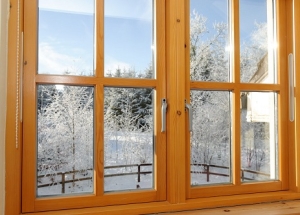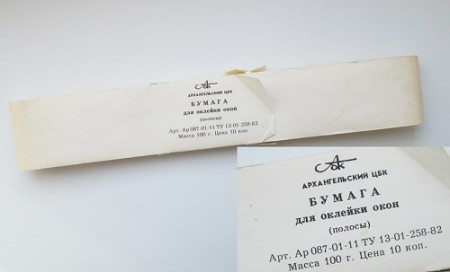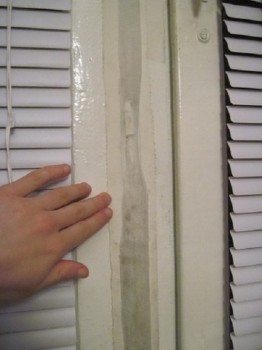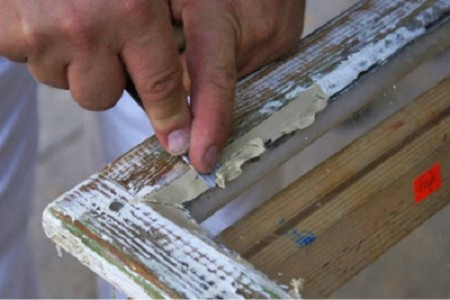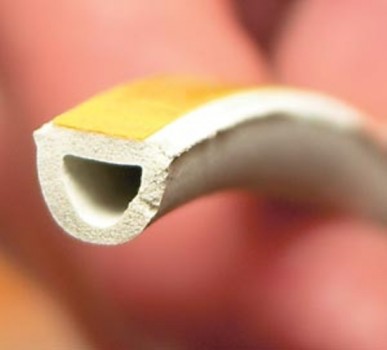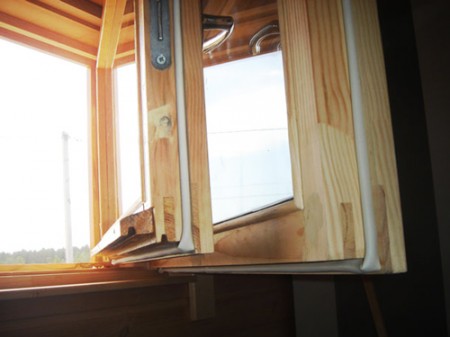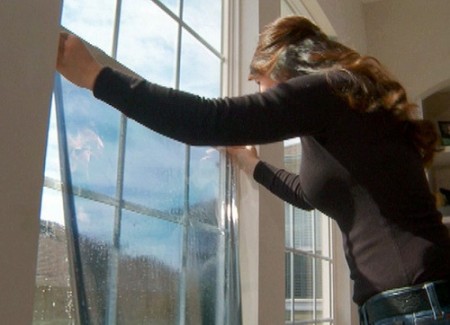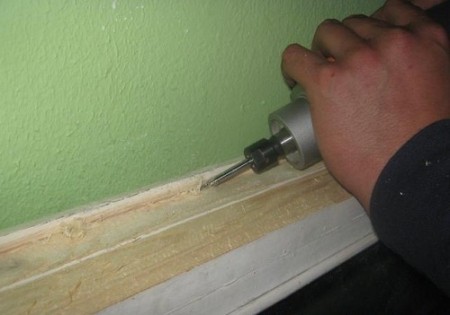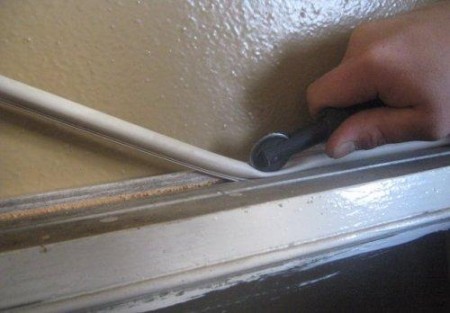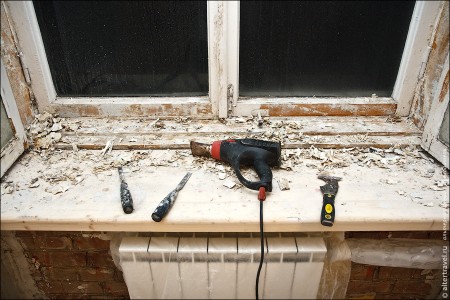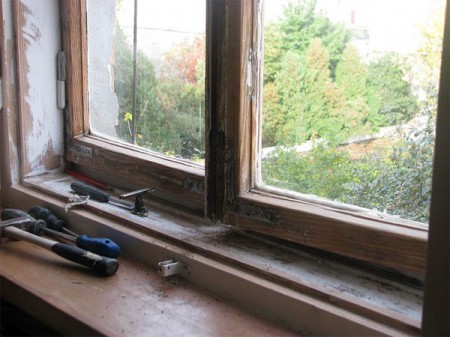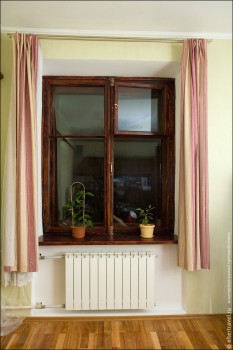Windows made of wood with proper care serve for a long time - sometimes several decades. But cracks and crevices appear inevitably, the glazing beams "lag" behind the glass, the tree is deformed from the temperature drop and humidity. All these injuries, as a rule, do not pay attention in the warm season, but closer to autumn, the constant drafts are increasingly suggestive: is it not time to make the insulation of wooden windows?
Content
How to insulate before?
Before the modern window systems appeared in the post-Soviet space, the people showed considerable ingenuity to protect themselves from window drafts. At the same time, the following materials were used for the insulation of windows: newspapers, paper, laundry soap, window putty, cotton wool, polyethylene film and even ordinary children's clay.
All these tricks from the past today will seem unnecessary to many, but we will still consider some old and proven ways of warming windows.
papering
This is a traditional method, which for sure will remember almost all the representatives of the older generation.
We will need:
- Old newspapers.
- Paper for pasting windows.
- Laundry soap.
- Rags.
In this case, the technology of thermal insulation of wooden windows is extremely simple:
- The newspaper pieces are dampened with water and twisted with "sausage".
- We cut off a strip of paper of the necessary length.
- We rub the paper with soap moistened with water.
- Firmly press the soaped paper against the frame.
- We iron the glued strip with a rag to remove air bubbles.
This method is far from ideal - in the spring it will be necessary to rip off the paper from the frames and pick the newspapers out of the cracks. But still, in some measure, he can protect himself from drafts.
pasting windows with stripes of fabric
Cloth less "injures" the paint on the windows. In order to puncture the cracks in the window frames, a newspaper, a linen cord, a rag, cotton wool or foam rubber is used, as well as when pasting paper.
The technology itself is similar in many respects to the previous one and the special complexity does not differ:
- The heater is pushed into the gap between the frames.
- Strips of cloth rubbed with soap.
- The fabric is pasted onto the frame, air bubbles are removed.
warming with putty or plasticine
This is perhaps the most "hard" way of warming wooden windows. The essence is extremely simple: sausages from putty and plasticine fill the gap in the window frames. Most often this way the windows were insulated from the outside. However, putty by spring usually turns into a kind of clotted clay, and it is rather problematic to dig it out. Plasticine with the onset of heat softens and begins to blur, so that the insulation of old wooden windows in this way can be recommended very much as a last resort.
Modern methods of warming wooden windows
Although there are fewer and fewer wooden window constructions, there are still enough people who prefer wooden frames to modern double-glazed windows made of plastic and aluminum. And, of course, in the modern market there are enough materials for insulation, restoration and repair of wooden windows. Below we will consider several of the most common methods of warming a wooden window.
thermal insulation with tubular gasket
This method is quite inexpensive and effective. Of the materials, only gaskets are needed, which are also called the tubular profile.
The profile is divided into:
- Rubber.
- Foamy.
- PVC profile.
- Profile of foam polyethylene.
- Polyurethane profile.
The profile can be either self-adhesive or adhesive-intensive. A heater with an adhesive surface, of course, is very convenient in operation, but does not have high reliability. With regard to the seal without a self-adhesive base, then to work with them, a silicone sealant is used.
After you have decided on the choice of material for your window, the profile is only required to be glued to the frame. With heaters of this type it is necessary to work at a temperature not lower than +10 C. The main advantage of this method is that the window can be freely opened and closed. But the service life of tubular heaters is quite short - after 5-6 years the window will need to be insulated repeatedly. In addition, the window covered with a heater does not look very attractive.
insulation of a wooden window with the placement of a sealant in the sash of the frame
Quite expensive, but, nevertheless, an effective and reliable method. In addition, it does not spoil the appearance of the window. The technology is as follows: a thin groove is cut in the window frame and filled with a foam rubber, polyurethane or polyvinyl chloride sealant. The process is laborious, requires attention and patience. It is preferable to entrust this work to professionals, as it is easy to damage the window frame. However, if you still decided to make the insulation of wooden windows yourself, follow the instructions below:
- We remove the window leaf.
- We cut the grooves along the perimeter of the frame. This is the most difficult stage of work. Specialists make grooves with the help of a special router.
- Install the seal in the groove. The glue is not used. The seal is held by means of a "herringbone" attachment.
- On the glass areas adjacent to the frame, apply the sealant, install the glass in place.
- For complete elimination of drafts, treat all fixed connection points in the window.
This insulation can last about 20 years. But with the seal you need to handle carefully, and in no case do not paint.
heat insulation with thermal insulation film
A heat-saving film for window insulation has appeared relatively recently. The main feature of this material is the ability to let light into the room, and to reflect the infrared radiation, thus keeping the heat inside the house. Work with the film must be extremely neat, not leaving on its surface of dust, dirt and stains. The film is glued to the glass with an electrically conductive side, which has a "metallic" luster.
The procedure for working with this material is as follows:
- We measure the window frame, leaving a small margin for fixing the film.
- Gently overlay the film on the glass, smooth the surface.
- Fix it around the perimeter with a double-sided tape.
Provided that everything is done neatly, the film on the window will be almost invisible.
swedish technology of warming wooden windows
As you might guess from the title, this method of thermal insulation was invented by economical Swedes. Swedish technology is called, also because it uses a Swedish sealant. In general, the method is very similar to the above, which implies the installation of insulation inside the frame. But in this case a high-quality sealant is used by the Swedish manufacturer, which is not afraid of paint and can withstand strong temperature changes. And this material serves at least 15-20 years. Sealant is produced in five sizes - 5, 6, 8, 10, 12 millimeters, which is very convenient.
All work on this technology is best entrusted to professionals, since here you need accuracy, accuracy and the availability of a special tool. As part of the additional services, the companies that repair and insulate windows often offer installation or repair of water drains, painting of frames, replacement of glazing beads and glasses. If all the work is done at the proper level, then in the end the wooden window is practically in no way inferior to the plastic double-glazed window.
Is it possible to restore the wooden window?
Not only can, but also need to periodically carry out restoration work. Let's say more - the restoration and simultaneous insulation of wooden windows is not such a difficult task, unless, of course, the window constructions are not an outright rottenness. And to restore the wooden window can almost to the state of the new. Restoration can mean both simple painting and replacement of glazing beads, as well as more thorough repairs, the stages of which we will briefly consider below.
For a thorough restoration of the wooden window you will need the following tools:
- Building hair dryer.
- Spatulas.
- Sealant and pistol.
- Paint, brush.
- Sandpaper.
- A hammer, a chisel.
- Hacksaw.
- Pliers, pliers.
Materials are needed: a primer, putty, paint on wood, glazing beads, nails, paper scotch.
The order of restoration works:
- We remove the window frame from the hinges.
- We remove all accessories - hinges, handles, latches.
- We pick out the putty or remove the glazing beads, take out the glass.
- With the help of a construction hair dryer remove all the paint from the surface of the window.
- If there are small areas of rotten wood, remove them, if necessary, you can paste a small plate into the site of the remote site.
- We clean the surface of the window with sandpaper.
- We fill the cracks with putty.
- Re-clean the surface.
- We process with a primer.
- We glue the glass in place with silicone sealant, after the sealant has dried, nails or glued beads.
- We paste the paradise of glasses with paper tape, apply a paint and varnish coating.
- We install new accessories.
The window thus restored will not need to be taken care of for at least 4 years. As you can see, practically all the ways of warming the windows, described above, are quite affordable and do not represent anything complicated. A properly insulated and, if necessary, a restored wooden window will serve you for a long time, without requiring a replacement.


